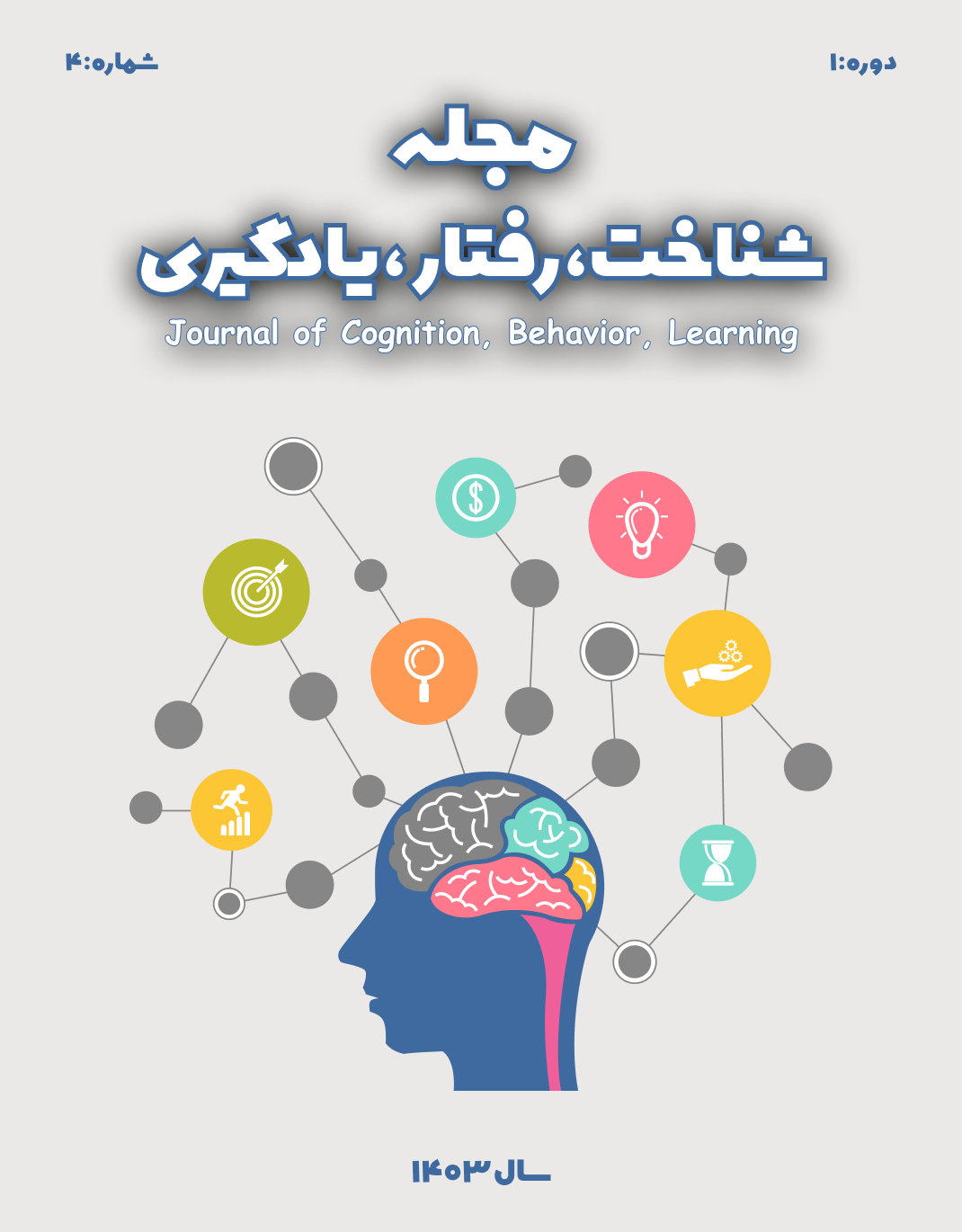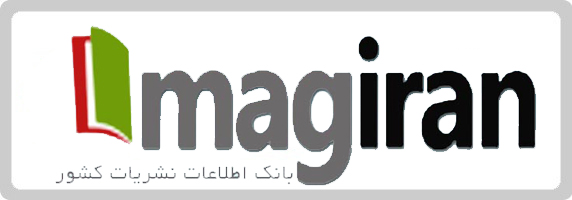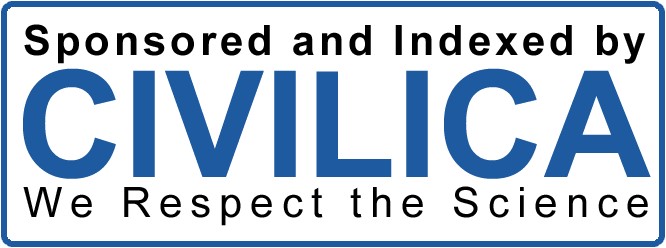تدوین بسته قصه گویی مبتنی بر قصه های کهن و تأثیر آن بر مهارتهای شناختی و اجتماعی کودکان دیرآموز
کلمات کلیدی:
بسته قصهگویی, قصههای کهن, مهارتهای شناختی, مهارتهای اجتماعی, کودکان دیرآموزچکیده
زمینه و هدف: قصهگویی بهویژه با استفاده از قصههای کهن، نقش مهمی در تقویت مهارتهای شناختی و اجتماعی کودکان دارد. هدف پژوهش حاضر تدوین بسته قصهگویی مبتنی بر قصههای کهن و بررسی تأثیر آن بر مهارتهای شناختی و اجتماعی کودکان دیرآموز میباشد.
روش کار: روش پژوهش آمیخته میباشد که در بخش کیفی از طریق مصاحبه نیمهساختاریافته و بخش کمی بهصورت نیمه آزمایشی با طرح پيشآزمون و پسآزمون با گروه گواه بود. جامعه آماری در بخش کیفی شامل اساتید روانشناسی دانشگاه، متخصصين و کارشناسان حوزه ادبیات کودکان شهرستان جهرم که به روش نمونهگیری هدفمند و مصاحبه در حد اشباع 10 نفر انتخاب و در بخش کمی شامل دانشآموزان دیرآموز دوره ابتدایی اول شهرستان جهرم که به روش نمونهگیری هدفمند حجم نمونهای برابر با 30 نفر انتخاب شدند. آموزش بسته قصهگویی مبتنی بر قصههای کهن طی 30 جلسه برای دانشآموزان دیرآموز گروه آزمایش اجراء شد. ابزار گردآوری اطلاعات کمی شامل آزمون هوش وکسلر ۵ (WISC-V) و پرسش نامه مهارتهای اجتماعی گرشام و الیوت (1990) بود. در بخش کیفی از روش کدگذاری براساس کدگذاری مضامین اصلی و کدگذاری مضامین فرعی براساس قصه استخراج شده از مصاحبه، و برای تجزیه و تحلیل دادهها از روش آماری تحلیل کواریانس چند متغیره استفاده شد.
یافتهها: براساس تحليل اطلاعات در بخش کیفی بستهی قصهگویی مبتنی بر قصههای کهن برای دانشآموزان دیرآموز دورهی ابتدایی اول شامل: رشد مهارتهای شناختی و رشد مهارتهای اجتماعی در 30 جلسه تدوین شد. برای رشد مهارتهای کلامی 5 قصه (مضامین فرعی) طی 10 جلسه؛ برای رشد مهارتهای شناختی 5 قصه طی 10 جلسه؛ برای رشد مهارتهای اجتماعی 5 قصه طی 10 جلسه براساس مصاحبه انجام شده، انتخاب شد. آموزش بسته قصهگویی مبتنی بر قصههای کهن بر بهبود خردهمقیاسهای مهارتهای شناختی (درک مطلب کلامی، بصری- فضایی، استدلال سیال، حافظه فعال، سرعت پردازش) خردهمقیاسهای مهارتهای اجتماعی(خودکنترلی، همدلی، ابراز وجود،همکاری) دانشآموزان دیرآموز دوره ابتدایی اول تأثیر داشت.
نتیجهگیری: بنابراین تدوین و آموزش بسته قصهگویی مبتنی بر قصههای کهن بهطور مؤثر موجب ارتقای مهارتهای شناختی و اجتماعی کودکان دیرآموز دوره ابتدایی شد و میتواند به عنوان رویکردی کارآمد در بهبود توانمندیهای این گروه مورد استفاده قرار گیرد.
دانلودها
مراجع
Azimi, M. H., & Arvand, S. (2014). Investigating the effectiveness of storytelling on improving the mental health of children aged 4 to 10. Journal of New Strategies in Psychology and Educational Sciences, 4(9). https://ensani.ir/fa/article/461836
Bagherian, H., Zare, A., & Golmohammadian, M. (2019). The effectiveness of storytelling in teaching social intelligence to preschool children in Kermanshah city. Library and Information, 23(4 (92 consecutive)), 172-155. https://www.sid.ir/paper/385748/fa
Baldiwala, J., & Kanakia, T. (2021). Using narrative therapy with children experiencing developmental disabilities and their families in India: A qualitative study. Journal of Child Health Care, 307-318. https://doi.org/10.1177/13674935211014739
Barry, L. M., & Burlew, S. B. (2019). Using social stories to teach children's choice and play skills to autism. Focus on Autism and Other Developmental Disabilities, 19(1), 45-51. https://doi.org/10.1177/10883576040190010601
Brown, D. (2019). Art Therapies. Jeihon. https://www.sciencedirect.com/science/article/abs/pii/S0197455608000403
Camilleri, L. J., Maras, K., & Brosnan, M. (2022). Autism Spectrum Disorder and Social Story Research: A Scoping Study, Peer-Reviewed Literature Reviews. Review Journal of Autism and Developmental Disorders, 9, 21-38. https://doi.org/10.1007/s40489-020-00235-6
Caroline, B., Jørgensen, T., Behrmann, B., Kristin, A., & Pettersen, A. (2023). Narrative therapy with children: A qualitative interview study with Danish therapists about the application of narrative practices. [Journal Name Not Provided]. https://doi.org/10.1002/capr.12656
Daub, A., & Huber, T. (2020). Effectiveness of Social Stories on Social Skills for Elementary-Aged Students with Autism: A Literature Review. International Journal of Education, 12(4), 13-37. https://doi.org/10.5296/ije.v12i4.17759
Davey, C. G., & McGorry, P. D. (2019). Early intervention for depression in young people: a blind spot in mental health care. Psychiatry, 6(3), 267-272. https://doi.org/10.1016/S2215-0366(18)30292-X
Doostdar Toosi, M. S., Mirzaei, S. H., & Iranmanesh, A. (2024). A Comparative Study on the Effectiveness of Storytelling-Based Positive Self-Talk Training and Child-Centered Mindfulness on the Psychological Well-Being of Children with Cancer. Transactions on Data Analysis in Social Science, 6(1), 59-67. https://doi.org/10.47176/TDASS.2024.59
Gharati, M., Kashani Vahid, L., & Asaseh, M. (2024). Develop a structural model of happiness of mothers with children with intellectual disabilities based on psychological capital with the mediation of cognitive flexibility and emotional regulation. Journal of Psychological Science, 23(133), 251-266. https://doi.org/10.52547/JPS.23.133.251
Heemskerk, C. H. H. M., & Roebers, C. M. (2024). Speed and Accuracy Training Affects Young Children's Cognitive Control. Journal of Cognition and Development, 25(5), 643-666. https://doi.org/10.1080/15248372.2024.2363190
Lee, S. Y., & Cheon, K. A. (2024). Epidemiology and Diagnosis of Slow Learners (Borderline Intellectual Functioning). Soa Chongsonyon Chongsin Uihak, 35(3), 175-180. https://doi.org/10.5765/jkacap.240010 PMID - 38966197 PMCID - PMC11220481
Lorfino, F., Scott, E. M., Carpenter, J. S., Cross, S., & Hermens, D. F. (2019). Clinical stage transitions in persons aged 12 to 25 years presenting to early intervention mental health services with anxiety, mood, and psychotic disorders. Original Investigation, 76(11), 1167-1175. https://doi.org/10.1001/jamapsychiatry.2019.2360
Ma, Y., Wang, L., Li, M., & Wang, T. (2019). Meta-analysis of the effects of exercise programs in improving the balance ability of children with intellectual disabilities. Journal of Intellectual Disability Research, 45(2), 144-154. https://doi.org/10.3109/13668250.2019.1632040
Matthys, W., & Schutter, D. (2022). Improving our understanding of impaired social problem-solving in children and adolescents with conduct problems: implications for cognitive behavioral therapy. Clinical Child and Family Psychology Review, 25(3), 552-572. https://doi.org/10.1007/s10567-021-00376-y
Membride, H. (2019). Mental health: early intervention and prevention in children and young people. British Journal of Nursing, 25(10), 552-557. https://doi.org/10.12968/bjon.2016.25.10.552
Morgan, A. (2020). What is Narrative Therapy. Dulwich Centre Publication. https://books.google.com/books/about/What_is_narrative_therapy.html?id=RadHAAAAMAAJ
Nareshkannan, J., & Shelvam, P. (2021). Effect of physical exercises on flexibility and reaction time among special children. International Journal of Physical Education, Sports Health, 8(3), 236-238. https://www.kheljournal.com/archives/2021/vol8issue3/PartD/8-3-27-612.pdf
Niazmand, M. (2014). The effectiveness of storytelling on reducing anxiety sensitivity and improving cognitive performance of sixth grade students with dyslexia. Monthly Education, 43(5), 24-36.
Ramezani Lashkariani, S., Rezaei Tarazooj, S., & Salimi, M. (2020). A Comparative Study of Lifestyle and Cognitive-Emotional Regulation in Mothers of Children with Learning Disabilities and Mothers of Typically Developing Children. Transactions on Data Analysis in Social Science, 2(2), 81-88. https://doi.org/10.47176/TDASS.2020.81
Rezaei, F., Havad Motab, M., & Jouli, Z. (2014). The effectiveness of combining movement and storytelling on motor skills and anxiety in children with developmental coordination disorder during quarantine. Motor Behavior, 14(48), 83-104. https://mbj.ssrc.ac.ir/article_3472.html
Shoshani, A., Braverman, S., & Meirow, G. (2021). Video games and close relations: Attachment and empathy as predictors of children's and adolescents' video game social play and socio-emotional functioning. Computers in human Behavior, 114, 106578. https://doi.org/10.1016/j.chb.2020.106578
Singh, R. (2024). Intellectual Ability and Subjective Well-Being of Slow Learner: A Case Study with Academic and Behavioral Intervention. International Journal of Indian Psychology, 12(2), 3036-3045
DIP - 3018.3001.3266.20241202. https://doi.org/10.25215/1202.266
Vahedi, M., Qoltash, A., & Charkh Abi, P. (2019). The effect of teaching science concepts through storytelling on social skills and verbal intelligence of bilingual preschoolers. The Culture of Counseling and Psychotherapy, 10, 81-110. https://www.sid.ir/paper/213888/
Wergeland, G., Riise, E. N., & Ost, L. (2021). Cognitive behavior therapy for internalizing disorders in children and adolescents in routine clinical care: A systematic review and meta-analysis. Clinical psychology review, 83, 1-10. https://doi.org/10.1016/j.cpr.2020.101918
دانلود
چاپ شده
ارسال
بازنگری
پذیرش
شماره
نوع مقاله
مجوز
حق نشر 2025 نرجس رضائی کوچی (نویسنده); مریم اساسه (نویسنده مسئول); لیلا کاشانی وحید, مریم برزگر (نویسنده)

این پروژه تحت مجوز بین المللی Creative Commons Attribution-NonCommercial 4.0 می باشد.





